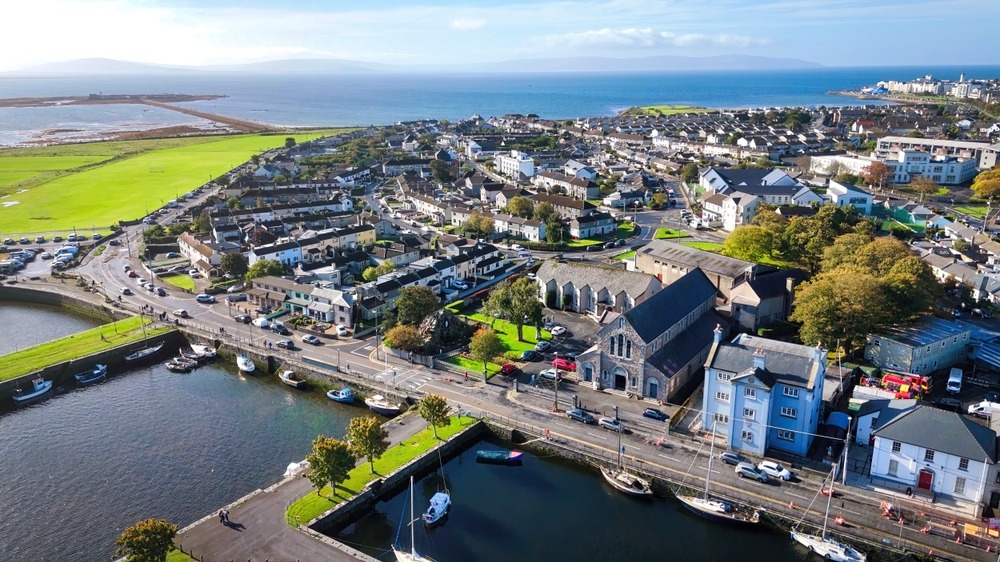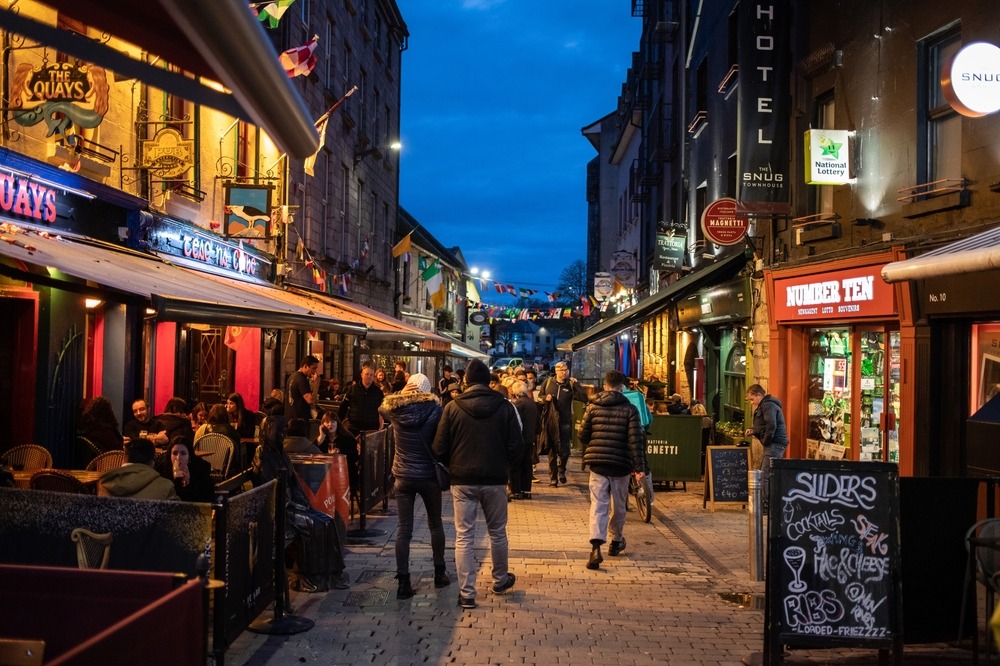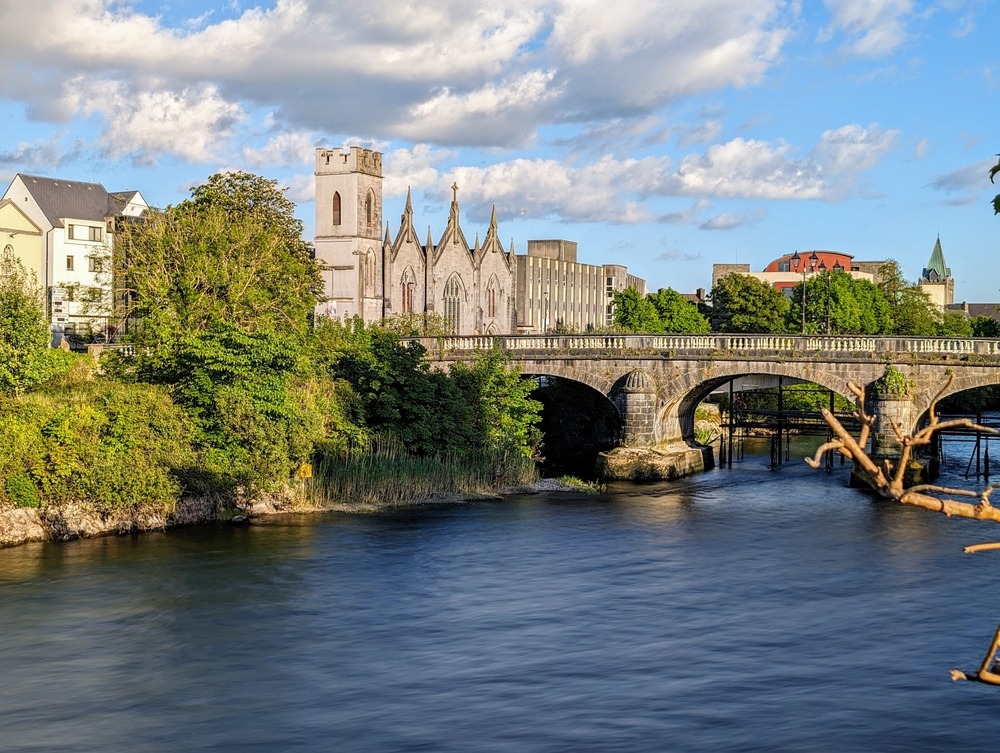History of Galway, Ireland
Known as the “City of the Tribes,” Galway sits on the western coast of Ireland at the mouth of the River Corrib and along the Atlantic’s Wild West coast. It is a city that bridges ancient Celtic traditions, medieval commerce, colonial resistance, and modern bohemian charm—all while maintaining its deeply rooted Irish language and cultural identity.
Early Beginnings and Medieval Foundations
The area around Galway Bay has been inhabited since prehistoric times, with early Celtic and Gaelic settlements scattered throughout the region. However, the recorded history of the city begins in 1124, when a fortification known as Dún Bhun na Gaillimhe (Fort at the Mouth of the Galway) was built by the King of Connacht, Tairrdelbach Ua Conchobair.
By the early 13th century, following the Norman invasion of Connacht, Galway came under Anglo-Norman control. In 1232, the Anglo-Norman family of de Burgh seized the fort and laid the groundwork for a walled medieval town.
The Rise of the Tribes
Galway flourished during the 14th to 17th centuries as a bustling port town and trading hub. The city was governed by 14 powerful merchant families—known collectively as the “Tribes of Galway”—whose names included Joyce, Lynch, Kirwan, and Blake. These influential clans shaped the city’s politics, architecture, and economy, and engaged in international trade with Spain, France, and Portugal.
The city gained independence from the English crown in 1396 through a charter granted by King Richard II, further enhancing its autonomy. However, English influence remained strong and occasionally turbulent, especially as tensions grew with the native Gaelic Irish population outside the city walls.

Colonization, Rebellion, and Decline
During the 17th century, Galway’s fortunes waned due to repeated conflicts, including the Cromwellian conquest, which devastated the region. The once-proud city suffered economically and politically under harsh anti-Catholic policies imposed during British rule.
Throughout the 18th and 19th centuries, Galway declined into relative obscurity. The Great Famine of the 1840s severely affected the region, leading to mass starvation, emigration, and economic collapse.
Revival and Cultural Renaissance
Galway began to revive in the 20th century, especially following the establishment of the National University of Ireland, Galway (NUI Galway) in 1845 and the rise of Gaeltacht regions preserving Irish language and traditions nearby. The city emerged as a cultural capital in Ireland, known for its literary legacy, musical traditions, festivals, and bohemian spirit.
In 2020, Galway was named a European Capital of Culture, reflecting its global recognition as a vibrant, creative, and historic city.

Top 25 Attractions in Galway, Ireland
1. Eyre Square (John F. Kennedy Memorial Park)
A central gathering place featuring sculptures, fountains, and the iconic Galway Hooker sailing boat monument.
2. Galway Cathedral
One of Ireland’s youngest great stone cathedrals, built in 1965, with impressive mosaics and a blend of Renaissance, Romanesque, and Gothic styles.
3. The Spanish Arch
A remnant of the 16th-century city walls built to protect merchant ships—now a popular riverside hangout spot.
4. Galway City Museum
Located beside the Spanish Arch, this museum explores Galway’s medieval roots, maritime history, and cultural heritage.
5. Quay Street & Latin Quarter
A bustling area filled with pubs, restaurants, artisan shops, and street performers—full of life day and night.
6. St. Nicholas’ Collegiate Church
Founded in 1320 and still in use today, this church has connections to Christopher Columbus and features medieval tombs and carvings.
7. Lynch’s Castle
A well-preserved 16th-century townhouse on Shop Street, once home to the powerful Lynch family—now a bank with historic exhibits.
8. Salthill Promenade
A coastal walk along Galway Bay, popular for its sea views, pebble beaches, and the tradition of “kicking the wall” at the end.
9. Claddagh Village
The historic fishing village where the famous Claddagh ring originated, just beyond the Spanish Arch.
10. Galway Market
Held beside St. Nicholas’ Church, this colorful weekend market features crafts, fresh produce, gourmet food, and local artists.
11. National University of Ireland, Galway (NUI Galway)
Stroll through the leafy university campus, home to stone courtyards, sculptures, and a cultural legacy tied to Irish arts.
12. Galway Arts Centre
Hosts visual arts exhibitions, poetry readings, and creative workshops in the heart of the city.
13. Hall of the Red Earl
An archaeological site and visitor center showcasing the ruins of Galway’s earliest municipal building from the 13th century.
14. The Fisheries Watchtower Museum
A quirky riverside tower offering views of the River Corrib and exhibits on salmon fishing and the city’s waterway heritage.
15. The Long Walk
A row of brightly colored houses facing the water—an iconic view often photographed and painted.
16. Galway City Distillery
Learn about the city’s craft gin and whiskey scene with tastings and a behind-the-scenes tour.
17. Druid Theatre
Home to Ireland’s most acclaimed theatre company, offering thought-provoking Irish and international productions.
18. Blackrock Diving Tower
Located at Salthill, it’s a local rite of passage to dive into the Atlantic from this iconic seaside tower.
19. Galway Atlantaquaria
Ireland’s National Aquarium features native marine species, touch tanks, and interactive exhibits for families.
20. Nora Barnacle House Museum
The preserved childhood home of James Joyce’s wife, offering insight into daily life in early 20th-century Galway.
21. Merlin Woods and Castle
A peaceful forest and medieval ruin on the city’s eastern side, perfect for walks and exploring heritage trails.
22. Galway Shopping Centre & Headford Road Retail Parks
For those wanting modern retail therapy, this area offers international shops and Irish brands.
23. Circle of Life Garden
A tranquil memorial garden near Salthill Promenade dedicated to organ donors, blending sculpture and nature.
24. Bohermore Victorian Cemetery
A historic graveyard with elaborate tombstones and ties to many of Galway’s notable citizens.
25. Music and Pub Scene
Galway’s pubs—like Tigh Neachtain, The Crane Bar, and Taaffes—offer nightly live traditional Irish music and a warm local atmosphere.
Conclusion
Galway is a city that pulses with the rhythms of tradition and creativity. It’s a place where stone towers and centuries-old churches sit beside colorful murals and music-filled laneways. Whether you’re diving into the Atlantic from Blackrock Tower, exploring medieval ruins, shopping for handcrafted goods, or simply listening to a fiddle on Quay Street, Galway invites you to celebrate life with warmth, wit, and wild western flair.


































